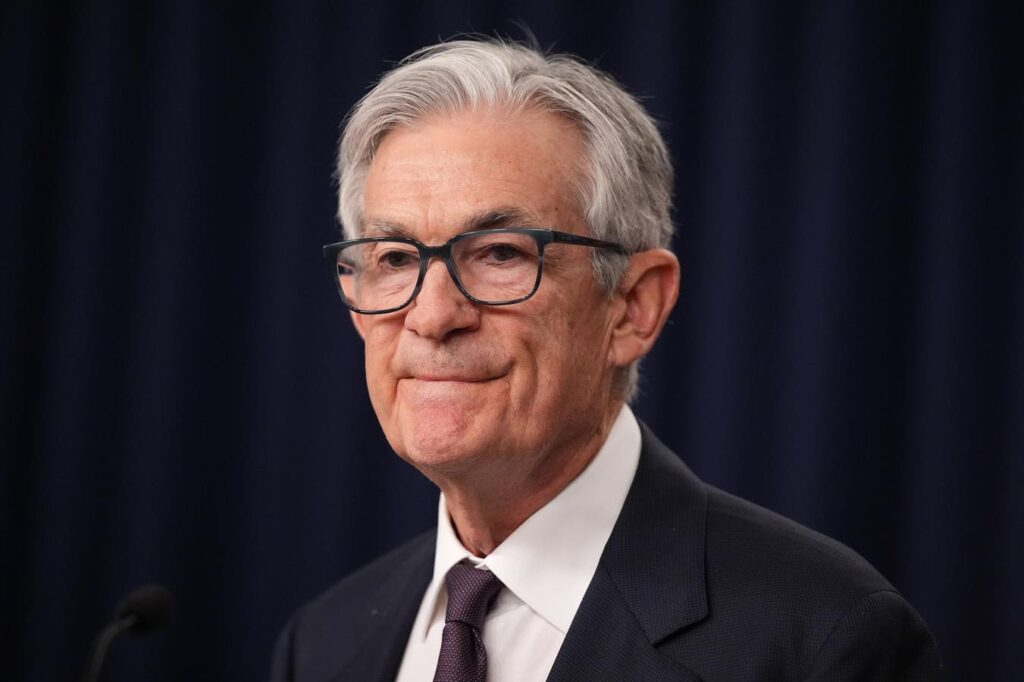Federal Reserve Chair Jerome Powell (Photo by Andrew Harnik/Getty Images)
Decision-makers at the Federal Reserve usually monitor issues connected to their dual mandate to keep employment high and inflation low. They prefer not to look at policy decisions made by the administration or Congress, though they sometimes have to predict the impact of policy changes. In 2025, however, the Fed is coping with tremendous changes in policy, plus swings back and forth on tariffs. Their latest minutes (from the May 2025 meeting) shed some light on the Fed’s difficult decision. They lead me to anticipate no interest rate changes this year, though Fed members themselves expect to do some rate cutting later in the year.
Inflation
The Fed minutes state, “The staff’s inflation projection was higher than the one prepared for the March meeting. Tariffs were expected to boost inflation markedly this year and to provide a smaller boost in 2026; after that, inflation was projected to decline to 2 percent by 2027.” Inflation can be stubborn to drop, which is why current measures remain above the Fed’s two percent target.
But the Fed views tariff-induced price increases differently. They would be one-time increases in the price level. The percentage change calculations would certainly show higher inflation for one year or whatever time period the change occurred in, but then prices would grow no faster than before. If we use “inflation” to mean persistent increases in prices, then the tariffs are not inflationary, even though they will certainly cause measured inflation to be higher. And consumers will know that prices are higher.
The Fed will not raise interest rates because of tariff-induced price increases. They have studied the issue and concluded that such a response would not be best for the economy. Most of us outside the Fed concur. However, deconstructing a price change into the tariff effects and other economic drivers won’t be easy. Thus, monetary policy will be more prone to error despite the best efforts of the Fed policymakers.
Risks
“Taken together, participants saw the uncertainty about their economic outlooks as unusually elevated. Overall, participants judged that downside risks to employment and economic activity and upside risks to inflation had risen, primarily reflecting the potential effects of tariff increases.”
If the Fed meeting participants had seen higher risk to employment and lower risk of inflation, they would have cut interest rates. Or if they had seen higher risk of inflation and lower risk to employment, they would have raised interest rates. But seeing both inflation and unemployment risk rising puts them in a difficult position. That risk to employment is the spark for current market expectations of one, two or three quarter-point cuts in rates this year, which align with the Fed’s expectations.
Productivity
In more typical times, the Fed looks at demand issues, such as consumer spending and business capital investment, to judge whether there was too much demand relative to supply. They now expect growth of supply to slow down. “Trade policies were also expected to lead to slower productivity growth and therefore to reduce potential GDP growth over the next few years.” Higher tariffs will limit U.S. companies’ purchases of business equipment and input materials, resulting in lower production potential. But productivity growth changes only gradually. This is a real issue when measured over decades—it’s like compound interest—but small potatoes in the short run.
Tariffs And The Interest Rate Forecast
The same day that the Fed minutes were released a court ruled that the President’s tariff orders were unconstitutional. That and a similar ruling by another court will likely be appealed by the president. And other laws may provide a basis for Trump’s tariffs. The result as of the end of May 2025 is that the future for tariffs continues to be highly uncertain. These court cases will reinforce the Fed’s prior belief that tariff uncertainty threatens the economy. The uncertainty increases the likelihood that interest rates will be cut some time in the second half of 2025.
Pace of actual unemployment very low.
The hard economic data available at this point do not show a weak labor market. Layoff headlines are overblown, based on hard data on people filing new claims for unemployment insurance. That may change due to tariff uncertainty. Layoffs are less a worry in this environment than companies declining to fill vacancies created by normal turnover. That would lead the Fed begin a series of small interest rate reductions.
Business Implications
Company leaders need not pay little attention to political arguments about whether the policies are good or bad; both proponents and opponents of a policy tend to exaggerate the effects of policies. Instead, small business owners and corporate executives should begin with specific impacts on their operations. Some companies use or sell imported products, or export, and they need to study the details that affect them. Businesses that sell capital goods or provide staffing services should develop contingency plans for slower sales due to tariff uncertainty. Companies that benefit from lower interest rates should sketch out plans for taking advantage of possible interest rate cuts. And all businesses should dust off their recession contingency plans. It’s too soon to pull the trigger on a downside plan, but reviewing it—or developing a recession plan for the first time—makes a lot of sense in this uncertain environment.
Read the full article here
